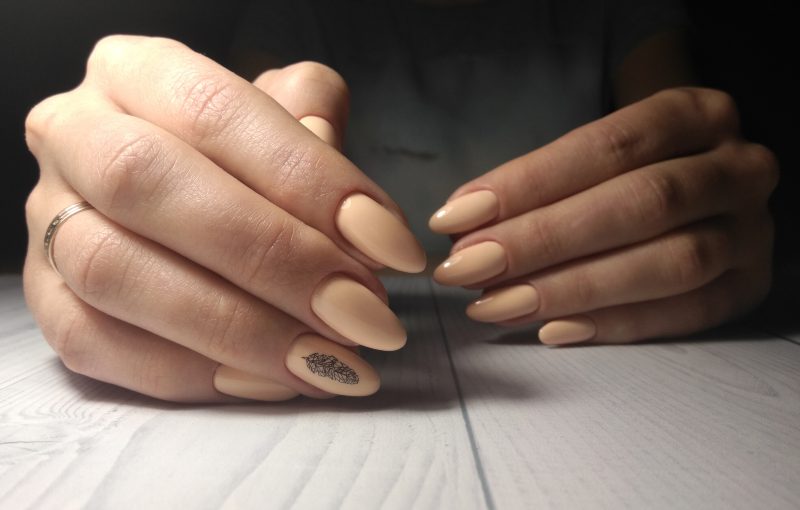
It is no mystery that women volleyball is far more popular than men volleyball! That’s why some women or girls habits might be kept (even during games) like playing with acrylic nails!
In this short article, I explain what the rules (if any) say about this as well as what are the pros and cons of using acrylic nails (or any similar things) during actual volleyball games or practice.
Let’s dive in!
What do volleyball regulations say about acrylic nails?
After extensive research, I’ve found out that volleyball rules say nothing about playing with acrylic nails …
However, the wisdom of doing so may depend on the length of acrylic nail that are being used. For example, such nails are available in short-length and long-designs. It can be very dangerous and potentially painful to wear long acrylic nails when playing the sport.
Not only could they break off and take part of the real nail with it, which would not only be painful, but could force a player out of the game. At the same time, the contact made with the ball and the nail could be misdirected, leading to a dropped point.
The general opinion of experts is that wearing nails to play the sport is unnecessary and inappropriate (Sorry Girls!)
Recommendation: If you are looking to know even more details about volleyball, like things that are allowed, and others that are not allowed, as well as some insightful information on how to perform better as a volleyball player, then I highly invite you to have a look at this Best Seller Volleyball Book. You will really learn the nitty gritty on how the sport is actually all about!
Acrylic nails help conceal or fix broken, damaged, or short nails, but their primary purpose is cosmetic. As they are used to disguise the true appearance of the underlying real nails. They are often used as a fashion accessory and to improve somebody’s look.
A volleyball court, or indeed, any other sporting arena, is not an appropriate environment to wear them. The sport is fast moving and energetic, involves a lot of use of the hands and fingers, all of which may put the integrity of the nails at risk, especially if players have not yet mastered the technique to execute shots properly.
Also, wearing fake nails of any sort may have a detrimental effect in somebody’s performance. If there were a situation where a player was reluctant to make a block, or to throw themselves to the ground because they were sacred of damaging their nails, then that would be harmful both for the individual and the team as a whole.
Better by far to leave the acrylic nails back in the changing rooms, and to put them on again after the game is finished.
Is it recommended using them during training?
The same arguments apply whether a player is involved in an actual match situation or training. They should be left in the changing room and only put on again once the session is over.
Hypothetically, an artificial nail could detach itself and strike a team mate, although that would be an unlikely outcome.
An even more improbable event would be if a nail should somehow sail over the net and strike a member of the opposing team.
While this is within the realms of possibilities, it is so remote that the laws of the sport remain silent on the subject.
The main reason though why artificial nails should not be worn even in training is because a training session should be approached with the same intensity and dedication as an actual match (Again, sorry Girls!)
What moves would the acrylic nails impact?
The first move that acrylic nails might impact is the serve. This is typically made using the palm of the hands and the outstretched fingers.
Striking the ball with the top of the fingers could cause the nails to break or become dislodged.
And then there is the block, which is all about leaping at the net with the arms and fingers outstretched to try and prevent the ball passing.
On the face of it, wearing acrylic nails may seem to give a blocker an advantage because they offer an extra few centimetres to the length of the fingers…
That though would be a false positive!
Indeed, acrylic nails are not meant to withstand the force of a spiked volleyball struck hard from a few metres away. They will inevitably snap off, and the resultant injury could be very painful indeed, and may require medical treatment.
And the libero or any of the defensive positions that may require a player to throw themselves around the court, or come into contact with the floor In order to retrieve the ball would again not be suitable for an acrylic nail wearer.
How to get those moves right even with such nails?
There may be circumstances, although they are rare, where a player can wear fake or acrylic nails as part of a longer-term nail treatment plan, designed to improve the health of their real nails.
It should be noted, however, that this is very uncommon – the prevailing advice, both of doctors and top level volleyball coaches, would be to take them off before a game or practice session.
And it may also be a trend among certain socio or religious groups. Many Muslim women, for example, wear false or acrylic nails, and it is not forbidden or “haram”.
In such cases, they will have to make changes to how they execute the moves, in order to preserve the nails, and themselves, from damage.
The server, for example, would have to make sure that they struck the ball with the palm of the hand and the base of the fingers. This in turn may limit the areas where they can expect the ball to land, because they will have to be conservative in their action.
Arguably the position where the greatest accommodation would have to be made, though, is in blocking. To keep the ball from striking the fingers, they would have to cramp them, robbing them of vital inches at the net. And this means they would have substantially less control of the ball as well. With firm, outstretched fingers, there is a good chance with a well-executed block that the ball will rebound to the opponent’s side of the net.
Such control would be difficult to achieve with the fingers in a cramp or crabbed position.
Any movement that involves a player throwing themselves round the court in order to save the ball striking the floor or going out of bounds is to be avoided by those with acrylic nails. It is very difficult to control the momentum in such circumstances, and if somebody is worried they may damage their nails first, they are unlikely to fully throw themselves into it.
Volleyball positions that are more suited to the use of fake nails?
One position that could be played using false or acrylic nails is that of outside hitter or spiker. To execute the move properly, the ball should be struck at the base of the fingers, at the top of the pam in a downward movement.
Provided that the ball is struck cleanly and with the right part of the hand, then wearing acrylic nails should not make any difference.
However, one problem with this is that a hitter is required not only to spike the ball, but they need to do their fair share of blocking as well. And that means, at some point, the nails will run the risk of being damaged.
Setting is another position that, if executed well, should allow the player to wear acrylic nails.
Good setting is all about the position of the hands. They should be about four to six inches above the forehead spread out in a triangular window in the shape of the ball. The fingers should be relaxed before contact is made, which should be with all the fingers touching the ball.
Contact must not be made with the palm, because that may be constituted as catching, which is against the rules in volleyball. Instead, the fingers should push upwards, with actual contact time with the ball minimised.
A dig may also not involve the fingertips, if it is made with a closed hand or fist or with the forearms. However, anything with the open hand could bring the fingertips into play, and therefore, any acrylic nails worn.
Final Thoughts …
Bottom line, even if you like wearing fake nails for beauty or cosmetic purposes I still can’t encourage you to use them while practicing.
However, if you still insist to use them or if you just can’t take them off for whatever reason, then I highly recommend that you stick to the precautions I explained in this article. So you won’t only damage them, but also you won’t damage your real nails.
Finally, you can learn about other things that are forbidden in volleyball!
